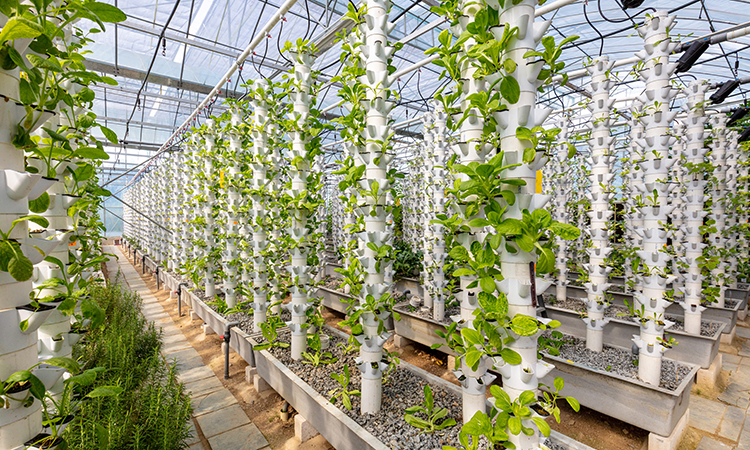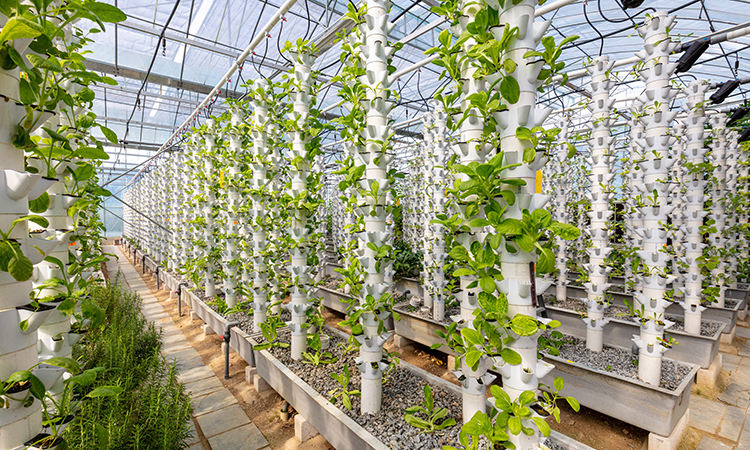Controlled environment agriculture may be the future of farming

New research from the U.S. Department of Agriculture (USDA) and Virginia Tech suggests that technologies such as controlled environment agriculture and agrivoltaics may become part of the future of farming. Controlled environment agriculture systems are typically enclosed or indoors. They include greenhouses, vertical farms and hydroponics that use horticultural and engineering techniques beyond traditional, soil-based […]

New research from the U.S. Department of Agriculture (USDA) and Virginia Tech suggests that technologies such as controlled environment agriculture and agrivoltaics may become part of the future of farming.
Controlled environment agriculture systems are typically enclosed or indoors. They include greenhouses, vertical farms and hydroponics that use horticultural and engineering techniques beyond traditional, soil-based outdoor production. Agrivoltaics involve the use of land for both farming and solar photovoltaic energy generation.
A recent publication by USDA and Virginia Tech researchers highlights that these innovative techniques could increase yields, enhance nutrition, improve access to local foods and provide better year-round access to fresh food than traditional large-scale outdoor production.
The research team found that, even though these systems face technological and economic challenges, they are part of a long history of advancing technology for the U.S. agricultural sector.
The team was led by Erik Dohlman with Karen Maguire, Wilma Davis, Megan Husby and Catharine Weber, all economists with the USDA’s Economic Research Service. Virginia Tech researchers included John Bovay, Assistant Professor and Kohl Junior Faculty Fellow in the College of Agriculture and Life Sciences’ Department of Agricultural and Applied Economics, and Yoonjung Lee, a graduate student in the department.
While these new technologies may not replace conventional production methods anytime soon, they have great potential to generate benefits, including renewable energy from agrivoltaic systems and reducing the risk of crop failure in extreme weather conditions.
“Part of the motivation for this project was to provide an overview of emerging technologies, particularly hydroponics and vertical farming,” said Bovay, who is also affiliated faculty in the Center for Advanced Innovation in Agriculture. “These industries have experienced tremendous growth over the last couple of decades, but official data collected and published by the USDA may not fully reflect the current technological and market situation. If controlled environment agriculture and indoor farming were to take off in the next decade, this could transform the consumer experience and possibly change the economic reality for traditional, soil-based farmers who grow crops that can also be grown in controlled environments and without soil.”
Other research findings include the following:
- The number of individually controlled environment agriculture operations in the U.S. more than doubled to nearly 3,000 between 2009 and 2019
- The quantity of controlled environment crop production increased by 56% over that same period, from 502 million pounds to 786 million pounds
- New technologies were used to produce a large share of total controlled environment agriculture production, with more than 60 percent of tomatoes, cucumbers and lettuce grown using hydroponics in 2019
- As of 2021, most of the approximately 300 agrivoltaics sites were solar farms planted with pollinator-friendly vegetative cover. Roughly 35 sites combined solar panels with vegetation that were grazed by sheep and a few were co-located with specialty crop production, including blueberries.
Read the full publication here: Trends, Insights, and Future Prospects for Production in Controlled Environment Agriculture and Agrivoltaics Systems.
Source: newfoodmagazine.com

